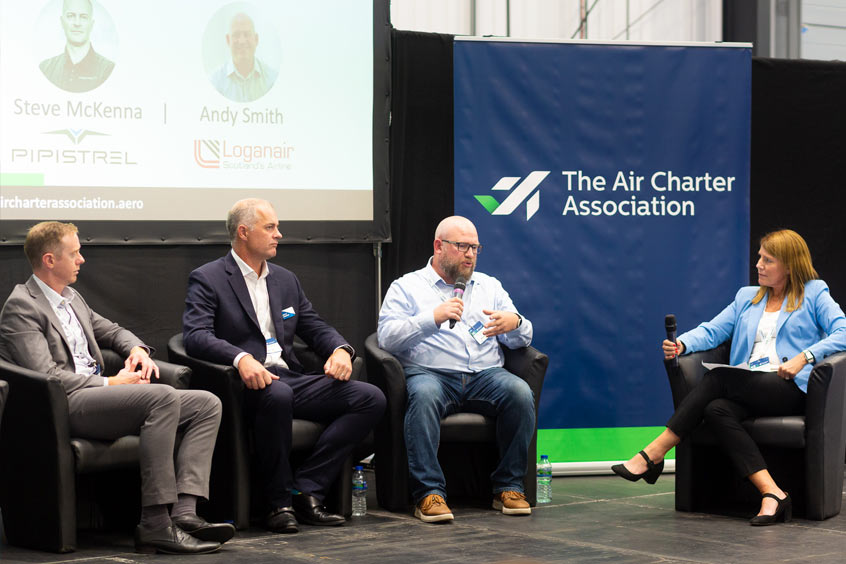Why visit ACE ’24?

What an interesting presentation at ACE'23 between major players from the green aviation scene. Coming from different sides of the developing industry, speakers ZeroAvia head of external affairs and marketing Dominic Weeks represented electric battery manufacture, Pipistrel director of sales and marketing Steve McKenna represented electric aircraft manufacture and Loganair head of sustainability strategy Andy Smith represented charter operators.
The first big point to note is that electric aircraft are already here; battery technology already exists for small electric aircraft. There are currently around 100 electric Pipistrel aircraft in the air today, small training aircraft that each offer approx one hour of charge. So the next step has to be to extend the size and range of zero emission aircraft, and for that the industry must consider the economics, forward planning and engineering.
Airfields, governments and authorities are urged to plan for, and support, the introduction of three phase power for charging larger aircraft. They should also consider the adoption of other sustainable energy sources to power regional aircraft, since these will be a much bigger draw on the power network. And infrastructure challenges relate not just to charging; for example the evolution of best air traffic control procedures should ensure aircraft are not held in the air longer than necessary. The onus must be on airports and the wider industry to plan now for what facilities will look like in a few year's time.
Further down the line there is potential for hydrogen power to be combined with electric engines. This could be the best pathway for regional turboprops and is potentially the most economical solution, more cost effective in the longer term than SAF. The only emission is water vapour. ZeroAvia is looking at turboprop conversions initially, working on engines for nine-19 seat aircraft such as the Cessna Caravan, Dornier 228 and Twin Otter. A first prototype took its maiden flight in January 2023 and there have been 10 test flights to date; certification and entry into service is targeted for 2025. The company is already working on an engine design for a 40-80 seat aircraft; it is retrofitting a Dash 8-400 in Seattle for test flights. It believes it can rapidly scale to larger aircraft in next few years.
As the certification of passenger-carrying electric aircraft approaches, so it is important to bear in mind that passengers must travel at a reasonable price point. That requires a level of government and private investment to get the technology through certification and to mature it through the first five years in service. Consumer demand for sustainable flight is strong, but it must be affordable, and the industry needs support to develop the infrastructure and mature the technology.